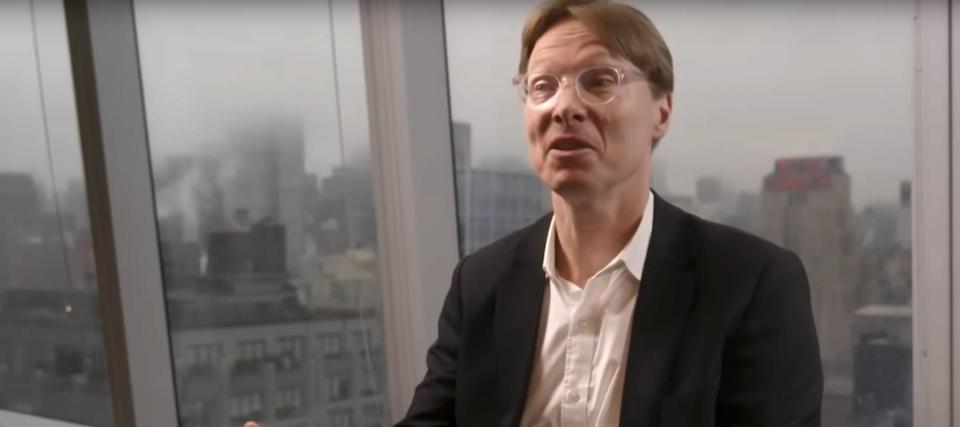US office vacancy levels hit record high — are we on the precipice of an 'urban doom loop?'

The national office vacancy rate just hit a record 19.8%, according to a preliminary report from Moody’s Analytics.
And it could get worse, as companies continue to lease substantial space despite a decline in the in-office footprint.
Don't miss
Commercial real estate has beaten the stock market for 25 years — but only the super rich could buy in. Here's how even ordinary investors can become the landlord of Walmart, Whole Foods or Kroger
Cost-of-living in America is still out of control — use these 3 'real assets' to protect your wealth today, no matter what the US Fed does or says
These 5 magic money moves will boost you up America's net worth ladder in 2024 — and you can complete each step within minutes. Here's how
“The doomsday scenario has yet to play out,” wrote Moody’s experts. “With significant lease rollovers and shifting interest rate expectations, uncertainty remains over exactly when office vacancy rates will truly peak.”
Still, some believe the glut in office vacancies could offer up a solution to America’s ongoing housing crisis — by converting some of the available space for residential use.
The 'urban doom loop' cycle
While the shift to remote work in recent years offers plenty of flexibility to employees, some experts have concerns the decline in office building usage could spell a more sinister problem for big cities.
“Everybody’s affected by this issue,” Stijn Van Nieuwerburgh, a professor of real estate at Columbia Business School, told CNN.
Van Nieuwerburgh, previously dubbed "the prophet of urban doom" by The New York Times, notes that declining office property values leads to lower real estate tax revenue, which means cities have to slash spending.
“When cities cut spending, cities become a less attractive place to live and people leave — and that aggravates the problem,” he told CNN. “We get into this vicious cycle that I’ve called the ‘urban doom loop.’”
Read more: Jeff Bezos and Oprah Winfrey invest in this asset to keep their wealth safe — you may want to do the same in 2024
In New York City, office vacancy levels have topped 20% since the COVID-19 pandemic began in 2020, reports CNN, citing data from the NYC Comptroller. Census Bureau data shows the city’s estimated population slumped from 8.80 million to 8.34 million between April 2020 and July 2022, a drop of roughly 468,000 residents — which represented nearly 5.3% of the city’s total population.
Van Nieuwerburgh told The New York Times last year that if office values decline in proportion with usage, city revenue from property taxes could plunge billions of dollars a year.
“So this is a train wreck in slow motion,” he said. “The second shoe has yet to drop.”
Are office-to-residential conversions really the answer?
Some experts believe converting vacant office buildings into residential apartments could revitalize a dying downtown core — and introduce some much-needed housing supply into the mix.
A recent RentCafe report reveals a record 55,000 apartments are scheduled for conversion from old office spaces. New York City has the second largest number of projects in the pipeline, at over 5,200.
But Van Nieuwerburgh told CNN that not every office building will be suitable for a conversion into residential units — and it could be an expensive process as well, which could translate to higher prices for future renters or apartment owners.
“A lot of policymakers would like to have affordable housing in these buildings and the problem is that the math often does not work out,” he warned.
Still, Van Nieuwerburgh believes there could be opportunities to produce more affordable housing through conversions if cities offer subsidies and tax incentives to developers.
“The doom loop is also not inevitable, it depends on the responses the policymakers have to the problem — and many cities have already passed legislation that stimulates conversion of office to apartment buildings,” Van Nieuwerburgh said.
As an example, Boston launched an incentive program in October allowing developers to apply for a payment in lieu of taxes agreement that provides up to a 75% property tax break for up to 29 years.
What to read next
Car insurance premiums in America are through the roof — and only getting worse. But 5 minutes could have you paying as little as $29/month
Jeff Bezos, Mark Zuckerberg, and Jamie Dimon are selling out of US stocks in a big way — here's how to diversify into private real estate within minutes
'It's not taxed at all': Warren Buffett shares the 'best investment' you can make when battling rising costs — take advantage today
This article provides information only and should not be construed as advice. It is provided without warranty of any kind.

 Yahoo Finance
Yahoo Finance 